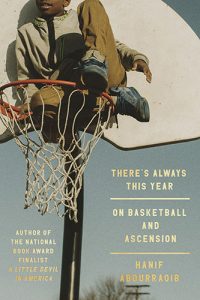Pleiades – 2010
A Journal of New Writing
Volume 30 Number 1
2010
Biannual
Sara C. Rauch
Let me be honest: I’ve always had a crush on Pleiades. This venerable journal publishes so much consistently good writing, especially poetry, that it is a pleasure to dive into the words between its covers. At 280 pages, it is bigger than a lot of books being published today; like a good novel, it can be zipped through, or relished over a longer period of time.
Let me be honest: I’ve always had a crush on Pleiades. This venerable journal publishes so much consistently good writing, especially poetry, that it is a pleasure to dive into the words between its covers. At 280 pages, it is bigger than a lot of books being published today; like a good novel, it can be zipped through, or relished over a longer period of time.
What really gets me every time I pick up a copy of Pleiades (far less often than I would prefer, I must confess) is the number of pages devoted to book reviews. In this volume alone, 160 of the 280 pages are dedicated to reviews. And not just any book reviews – these are reviews of independently published poetry and fiction, books that have a hard time finding review space elsewhere.
I flipped right to the second half and dove in. Now, not only is my list of books to buy or request at the library much longer, I’ve been exposed to all sorts of titles I might never read about otherwise. Mardi Stewart’s review of Isobel Dixon’s A Fold in the Map examines Dixon’s themes of “poverty and plenty… expressed through the metaphors of landscape, water and food.” Wayne Miller’s review of Young Smith’s In A City You Will Never Visit made me glad all over again that I’m a writer. New collections by Fanny Howe, Mark Halliday, Russell Edson and Mary Oliver are reviewed as well.
Though my heart goes directly to the reviews, it would be impossible to read Pleiades and not mention the delicate, well-crafted poetry inside. There are four different poets in translation included here, adding another dimension to the aesthetic. Tomaz Salamun’s confusing and surreal poem, “The Poem Written Under the Influence of Wells,” says,
Little green cherries, not yet
ripe, I put them
on a canvas,
on a waxcloth,
on a little fur coat
and push them through
an aperture leading to the end of
the world.
Do I know what he’s talking about? Not for a minute. Does it matter? Not at all, because his images are so arresting, so beautiful.
The poetry, for the most part, doesn’t venture into any overly experimental territory, though Catherine Sasanov’s “Sitting at the Mouth of the Great Slave Trading Route, / the Slaveholder’s Great-Great Granddaughter / Pens Her Preface to the Text” runs vertically up and down the page, forcing you to turn the book to read it.
My favorite poem, Endi Bogue Hartigan’s “Two tigers walking different directions through bamboo” captures a certain pervasive quietness that invades our relationships. “Two” is the chorus, and Hartigan’s efficient return to these silent, stalking creatures creates an almost Zen atmosphere for the poem:
The tigers were the quiet of the two
in proximity, sensing each other’s movement
and presence, walking forward or back,
to the river water, restless.
The chorus was at its best when one undressed
for the other in the dark,
which was a window
where starlings and sirens grew.
Jack Boettcher’s “Jimmy’s Battle,” a piece of short fiction that critiques modern American life, creates a whole world where theme parks and fantasy go too far, and by the end, one cannot help but feel the confusion and disorientation of Jimmy, a young boy given the birthday party of a lifetime by a parent with an ulterior motive, who finds himself, ultimately, alone. It’s sad, and it’s breathtaking. Strangely (purposefully?), Meghan Kenny’s story, “I’ll Tell You What,” is also about an adolescent boy named Jimmy; it is like reading two very different sides of the same story.
Pleiades is a journal of substance, and I highly recommend a foray into its pages.
[www.ucmo.edu/pleiades/]



